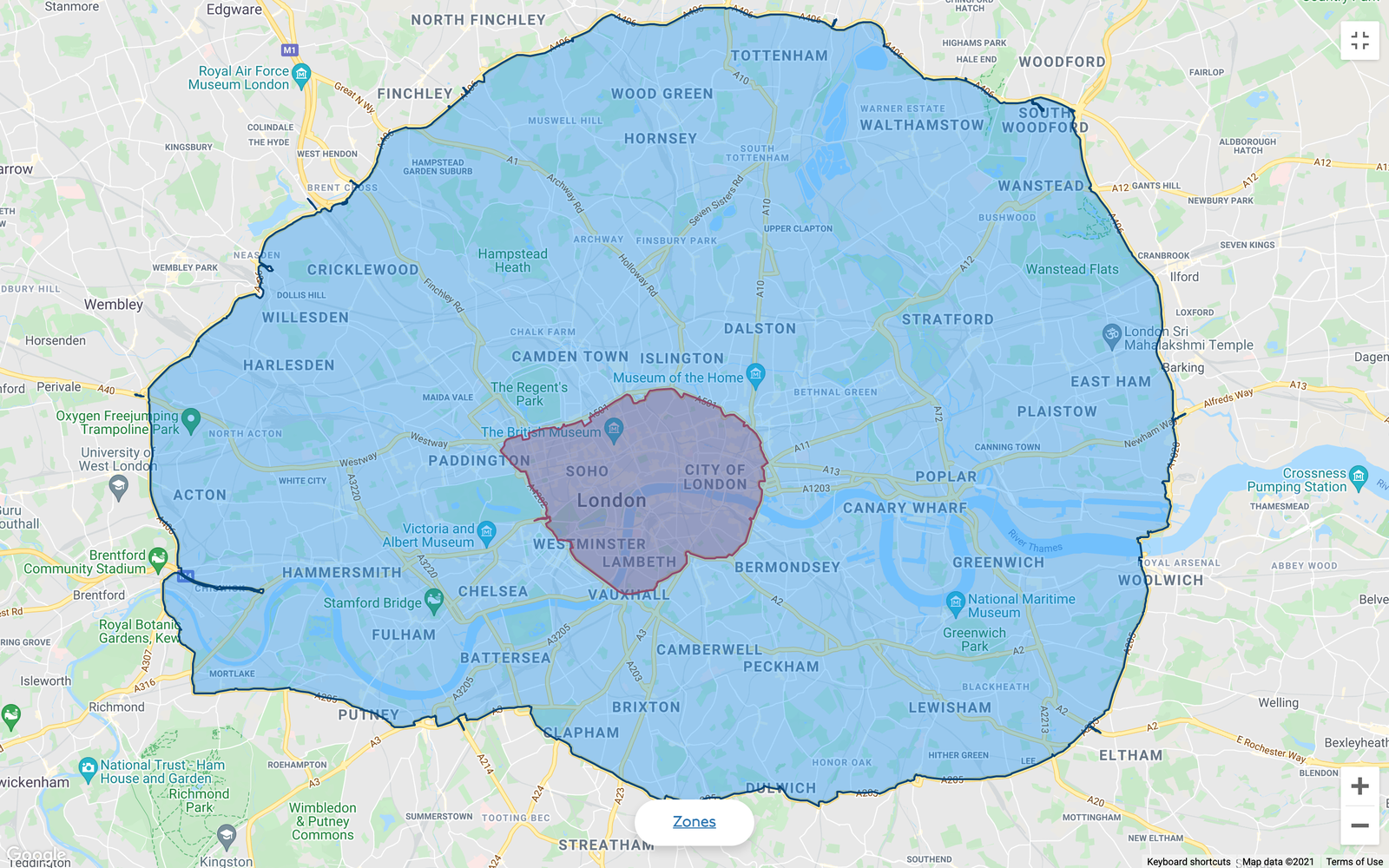London Mayor wants to continue with ULEZ Greater London expansion plans
It is currently difficult to determine the extent of the success of London's ULEZ, but Sadiq Khan wants to continue its expansion anyway.

The expansion of the Ultra Low Emission Zone in London has been deemed successful.
London’s Ultra Low Emission Zone (ULEZ) levies a charge of £12.50 per day on vehicles which exceed emission limits, and previously covered Central London. But in October 2021 it was expanded to include the areas up to the inner boundaries of the North and South Circular roads.

The Mayor of London, Sadiq Khan, says that the expansion has been a success, and argues for further expansion to include more of London within the ULEZ from next year.
However, data from Transport for London (TfL) which was published yesterday shows that in actuality the positive impact of the ULEZ expansion has been limited.
The data, the Evening Standard reports, shows a 44% reduction in nitrogen dioxide (NO2) at the roadside in Central London compared to if the ULEZ was not in place, while across Inner London, the reduction was 20%.

However, both of these reductions are smaller than those seen when the ULEZ covered just Central London. In the period of January to March 2021, there was a 56% reduction in Central London, and a 21% reduction in Inner London. Since then, the reduction figures for nitrogen dioxide have declined.
However, the data from TfL - which covers the period from April to June 2022 - also shows that 21,000 vehicles entered the ULEZ overall since the expansion; that 44,000 fewer diesel cars entered the ULEZ since the expansion; and that 67,000 fewer non-emission-compliant vehicles entered the ULEZ since the expansion.
New @TfL data on impact of Ulex (Ulez extension, introduced last October): appears to show a decline in effectiveness in tackling nitrogen dioxide emissions? pic.twitter.com/H72v4EkTsD
— Ross Lydall (@RossLydall) July 19, 2022
Due to the changes in societal transport habits over the last couple of years as the UK has drifted in-and-out of Covid-induced lockdowns, as well as fuel price increases and the cost of living crisis, TfL, the Evening Standard reports, said that it is difficult to understand exactly how the ULEZ expansion has affected pollution. For example, while there remain reductions in the levels of NO2 roadside in Inner and Central London, in Outer London the levels of particulates that come from brakes and tyres higher now than they were two years ago, while in Inner and Central London - where the ULEZ is active - there has been no change in the level of these particulates.
Mr. Khan wants to expand the ULEZ further by August 2023, so that it covers Greater London. The proposal from the Mayor is a cause of alarm for many living in Greater London who are concerned that the daily ULEZ emissions levy will have a significant impact on their finances. These concerns are of course intensified by the current cost of living crisis.
There have been suggestions that funds could be raised for a scrappage scheme, which would incentivise Londoners living within the ULEZ to scrap their vehicle if it is outside the emissions limit. However, the government is yet to fund such a scheme.

As such, those living in the ULEZ who would scrap their high-emission vehicles would then be struggling to afford an alternative transport solution.
This represents the current quandary, because although the correct thing to do is to adopt technologies - like electric power, or alternative fuels like hydrogen or synthetics - that are positive for the environment and which can help combat the increasing climate crisis, those technologies are currently quite expensive, and, for ordinary people on ordinary money in the middle of a cost of living crisis where wages are falling way behind inflation, ‘expensive’ is not really an option.

